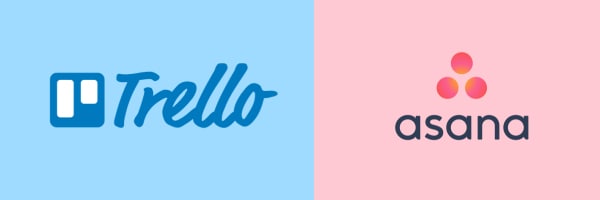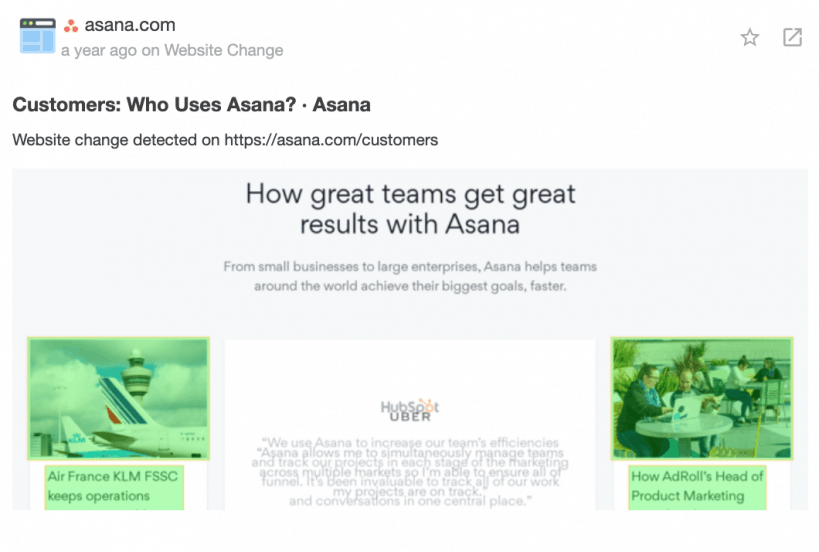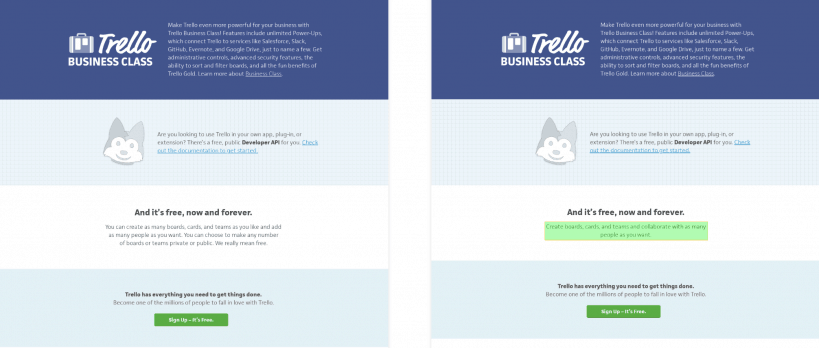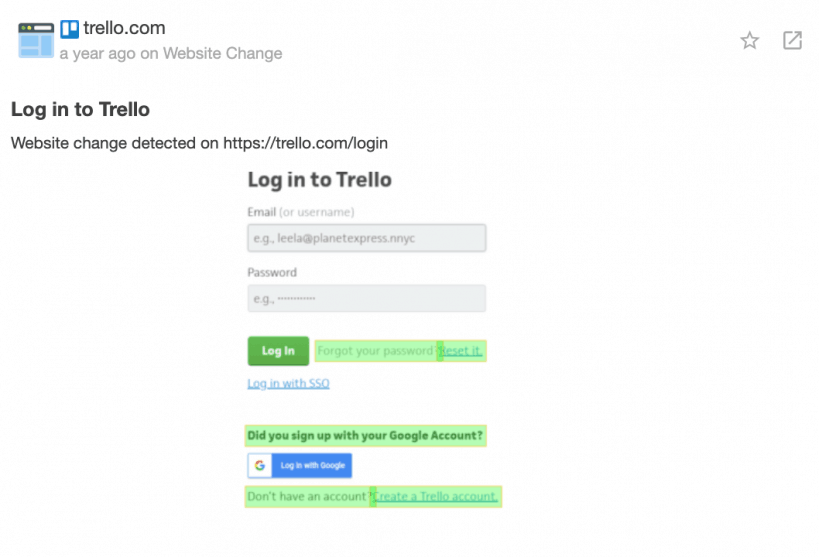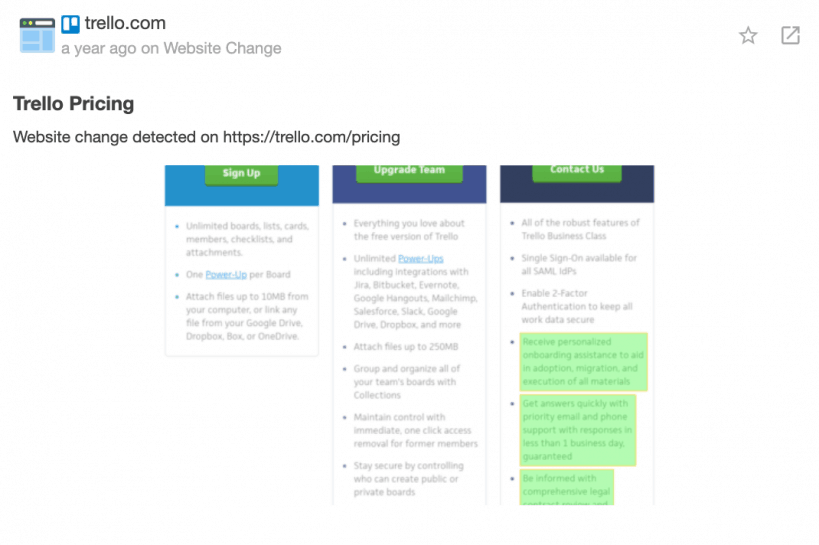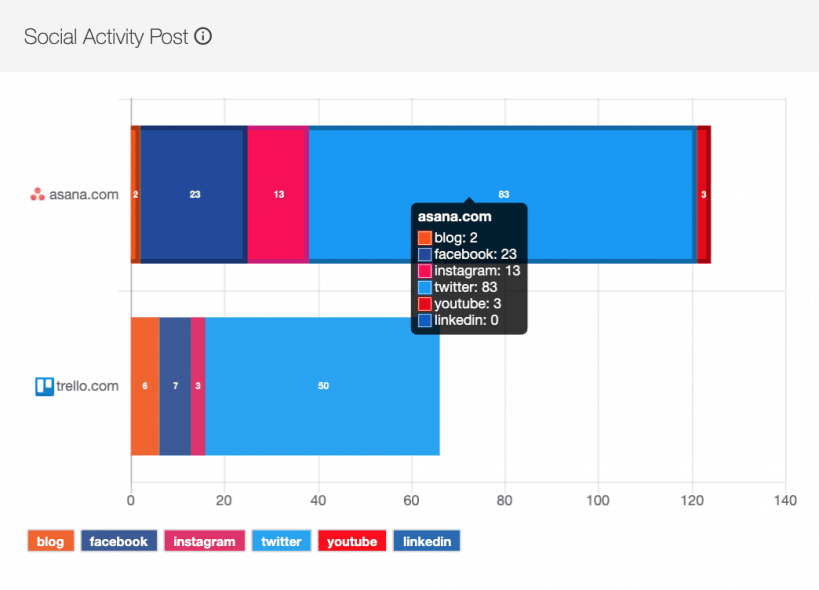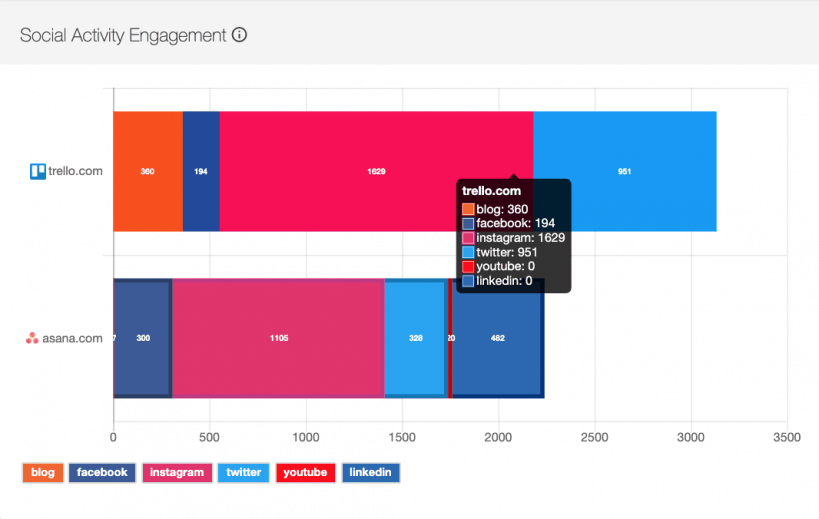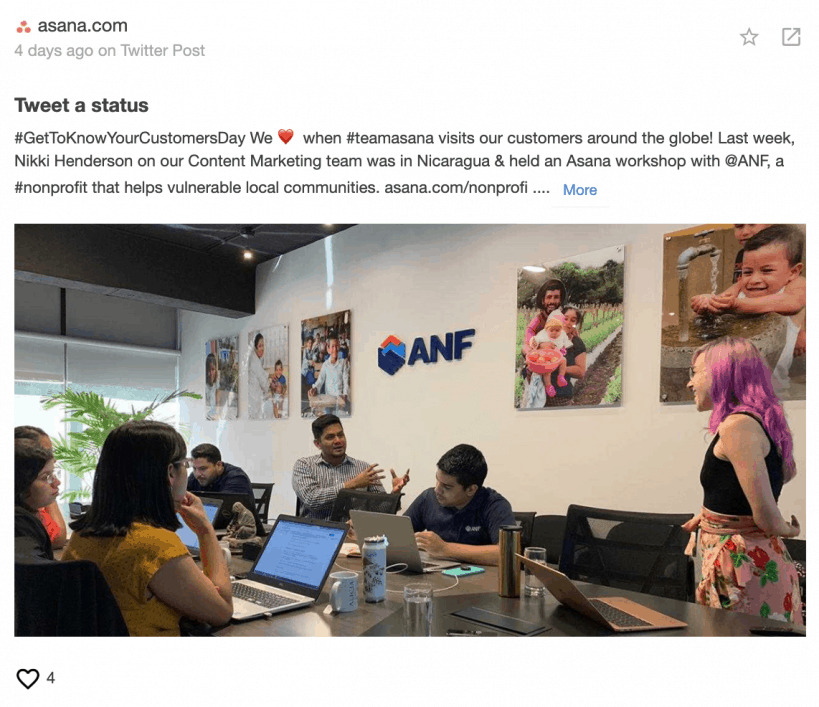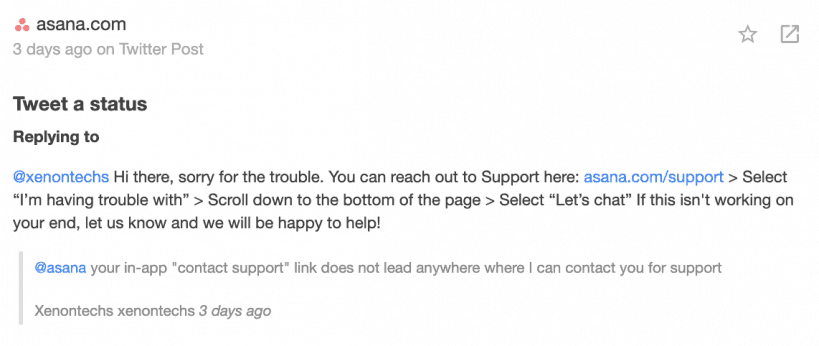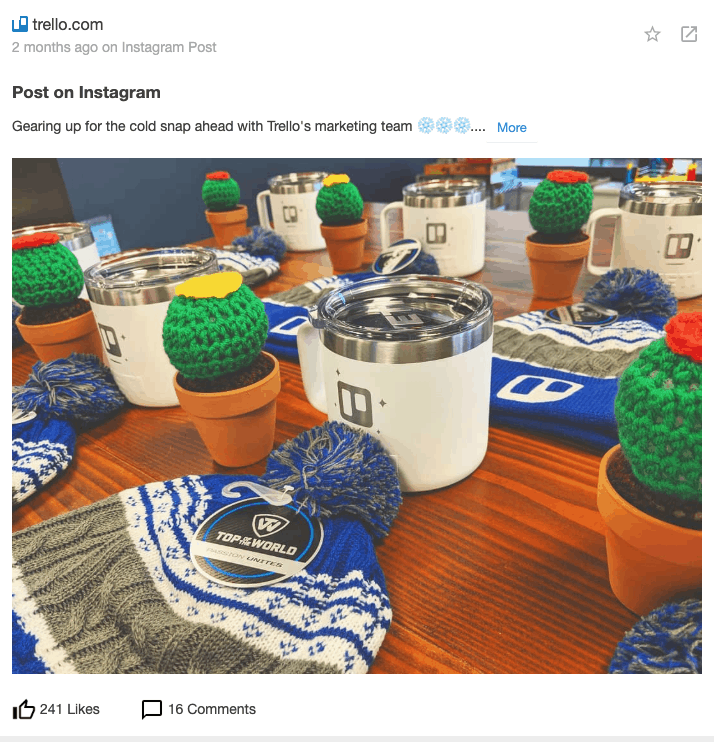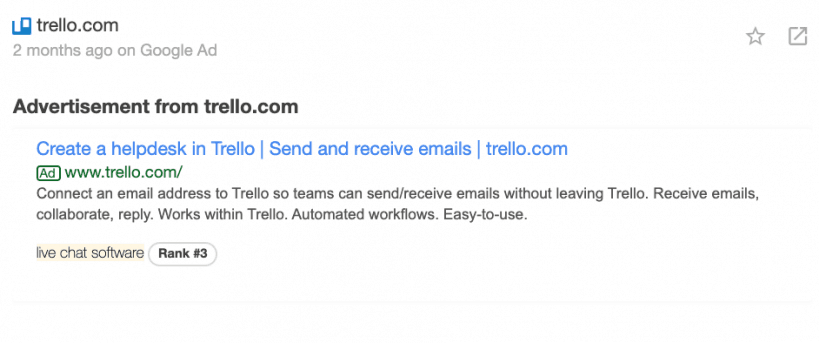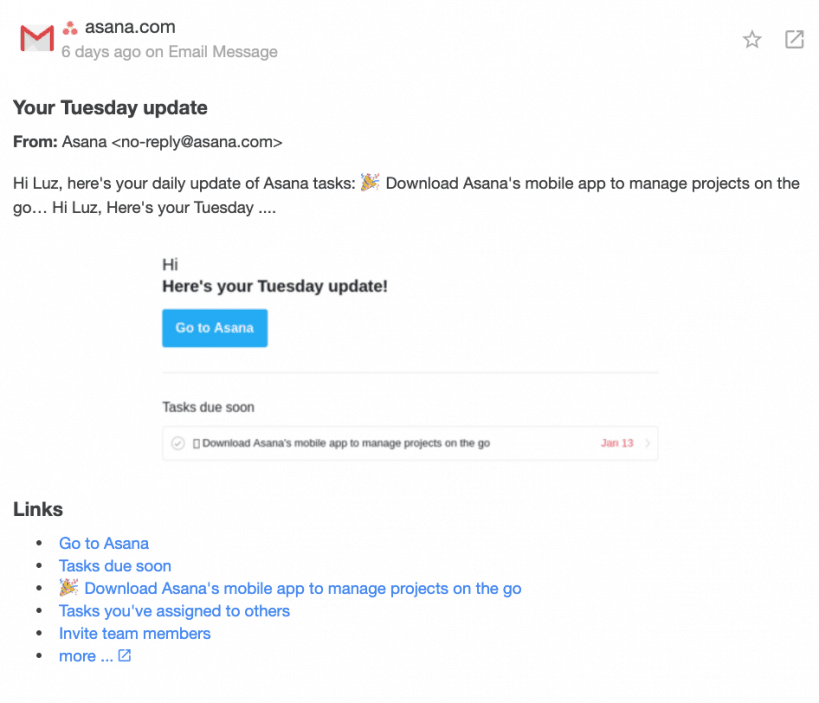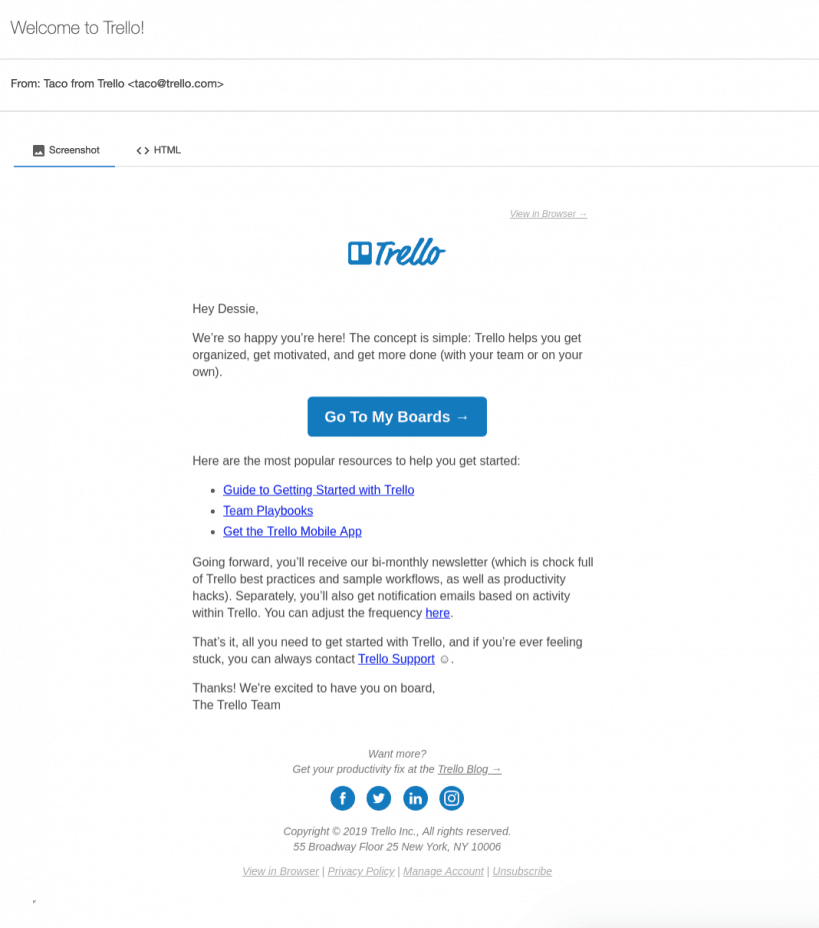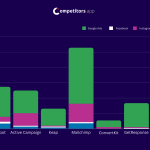There’s a big chance to come across Trello and Asana while haunting for the best-fit project management tool for your tasks, isn’t it? Choosing the right project management software for your business can be a challenge, especially in such a competitive market.
Still, today’s goal is not diving deeper into the importance of keeping your team connected and productive with online collaboration tools as Trello and Asana, but to analyze the digital marketing strategies of these two main brands that are competing on the digital stage.
We’ll get a close look into Trello and Asana marketing activities on their websites and Social Media channels to figure out each content marketing strategy, type of posts, and frequency. Also, we will be uncovering Trello and Asana newsletters to see exactly what users are receiving from each brand, and what’s each brand’s focus on Newsletters. At the same time, we’ll get to know how often are Trello and Asana advertising on Google and Social Media and more.
Let’s start to discover and analyze the gathered data!
Trello vs. Asana Website Strategies
Monitoring a website doesn’t have to be a challenge or a time-consuming task – nowadays, with automatic online software, the process of tracking sites and spying on competitors’ changes made on their websites is easier than ever.
When it comes to Trello and Asana’s websites, we analyzed the primary type of website changes that impact the customer experience and bring value to the brand. Those website changes are key updates that can be easily applied to any other website to boost conversion, build brand trust, offer a smooth onboarding process, and more.
Asana focuses on brand trust
Brand trust is a big deal for marketers, especially in 2020, and companies bring on first-line what customers say online about their product or service. According to reports, 91% of people regularly or occasionally read online reviews, and 84% trust online reviews as much as a personal recommendation – so Asana is focusing on gathering happy (and very well-known) customer’s comments on a dedicated page, “Who uses Asana”, underlining the advantages of using the tool.
Trello keeps it simple
While analyzing Trello’s website, the main updates are related to text and changes in SEO elements. It’s clear to notice that the brand wants to “keep everything simple” by delivering their message fast and precise, in as few words as possible.
Crafting a concise but comprehensive way of describing a product/service will help the possible customer to get a quicker idea of what your product/service does.
Also, when it comes to creating the right message for an audience, focusing on your user/customer and underling its main advantage to using your tool will help him to make a final decision and to figure out that actually, your product will satisfy his needs.
As you can see in the example below, “Trello Your Way” – where the focus was more on the brand/tool to was changed to “See What Trello Can Do For You”, focusing 100% on the user’s possible benefits of using the software.
Another insight detail gathered while monitoring a website, in this particular case, spotted on Trello’s website, allowed us to keep updated with the changes regarding the process of logging in on their website. Those kinds of changes are essential in every competitive research – it’s crucial to understand how your competitors are structuring their “Login” process, so you’ll spot the possible changes that you might be missing out to facilitate the onboarding of your possible future users/customers.
As mentioned before, monitoring a website, especially a competitors’ website, can be a source of information for your further steps. Getting to know competition most recently added features, but also pricing changes allow marketers to act quickly to fill an existing gap between the company and its competitors and to build a strong competitive advantage.
In the example below, Trello added new features focused on creating personalized onboarding and priority customer support – features that might not impact the product/service itself. Still, for sure, it has a significant impact on users and future customers.
Trello vs. Asana Social Media Strategies
Analyzing Trello and Asana Social Media activity on different channels gives a better insight into their type of posts, frequency, and detail engagement. As we can notice from the below graphic, over the last four weeks, Twitter is the Trello and Asana’s number one favorite Social Media channel, followed by Facebook and Instagram.
Twitters – most used Social Media channel
When it comes to analyzing the engagement details, Instagram has the most engagement for Trello and Asana, followed by LinkedIn in Asana’s case, and Twitter in Trello’s case.
Let take a closer look and see precisely what Trello and Asana are posting on Twitter, Instagram, Facebook, and LinkedIn.
With more than +83 Twitter posts over the last four weeks, Asana makes its followers part of their journey by sharing the team’s activities. Building a “familiarity feeling” by getting to know trough Social Media pictures the members of a team, in our case Asana’s team, helps to make a connection between the brand and the user/customer, but also builds trust.
Speaking about building a connection with their followers and users – on Twitter, Asana is actively engaging with the audience by replying to feedback, comments, and often offering support.
When it comes to Trello, with an average of 22 Twitter posts per week, the brand “keeps it simple”, concise and funny. Overall, Trello has a clear brand image – and when people already know what your service does, then you can “play” on Social Media as you wish, without the constant need to focus on your product specifications or to remember your public what’s your brand’s goal.
As in Asana’s case, Trello uses Twitter to direct its users to set up their profiles, personalize notifications. Plus, Trello always uses GIFs and emojis to express their messages visually – which makes communication effective, modern, and catchy.
On Instagram, Trello has the most engagement, with an average of seven posts per month – compared with Asana’s activity on Instagram, 21 posts during the last month. The post below was the most viral Instagram Trello’s posts over the previous four weeks. With more 450 likes and 12 comments, Trello succeeds in engaging with its audience by focusing on general situations and contexts applying to a broad public, not only Trello’s users.
The success’s receipt in the post below? A famous quote by a famous philosopher, a general truth with whom many people can “click,”; a question, and a picture that looks like a cozy break in the middle of the week.
Also, on Instagram, Trello shares the team’s moments, but in a quite different way, as seen for Asana’s case. If Asana’s team is more “open” when it comes to publishing pictures of the team’s members, Trello is keeping things more private, by choosing suggestive ways to build a connection with the audience.
Trello vs. Asana Ad Strategies
Uncovering a business’ Ads. is not an impossible task – moreover, digital marketers should use automatic tools to discover each time when competitors are launching new campaigns on different channels, as Facebook, Instagram or Google, so they know exactly how to overcome competitors or how to take advantage of their gaps by planning better PPC campaigns.
Trello’s Ads. on Facebook are short, catchy, and don’t make you think about Trello as a tool to use only for professional purposes, but also for … let’s say more enthusiastic goals as a “trip of a lifetime”. By addressing a general and vast context, there are high chances that a higher public will connect with the Ad. and the end with the tool.
On the other hand, Asana focuses on Facebook Ads. with a personal and familiar touch, by underlining the advantage of using their software.
Tracking competitors’ Ads. allow marketers to discover competitors’ keywords and ranking for each Ad. Having a closer look at Asana’s Google Ads. uncovers the brand’s efforts to rank a higher position for certain keywords, as “best project management platforms” or “easy project management tools”.
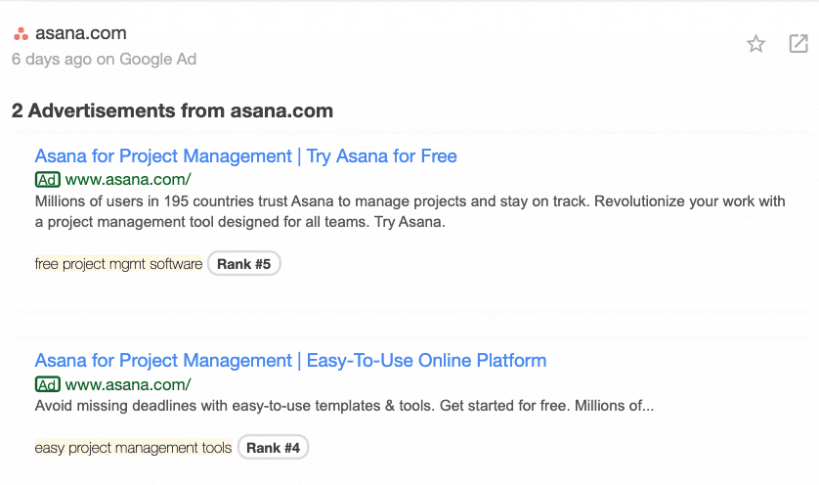
In Trello’s case, with only two Google Ads over the last month, the brand succeeds to assure the first position on Google with keywords as “Trello”, but still, trying to touch the first Google position with keywords as “live chat software”.
Trello vs. Asana Email Marketing Strategies
Uncovering competitor email marketing strategies help marketers to know accurately what users/customers receive in their inbox – from discounts, guides, updates news, and more. Asana, for example, sends newsletters regarding the state of tasks, a daily and friendly “Update” to keep you focused on your performance of duties.
Asana sends a daily update of tasks
Trello focuses on onboarding and features
When it comes to Trello’s newsletters, the brand’s email marketing strategies are quite different from Asana’s actions on email. Trello focuses on getting users onboard quickly by providing resources to make sure the new user doesn’t miss a thing of the tool. At the same time, Trello’s newsletters have an educative role, proving tips and tricks on productivity and more.
In conclusion, Trello and Asana are focusing on providing value and building brand trust. There are many techniques to earn your targeted public attention, and all the strategies should be adapted to your own brand identity. Even if your competitors are not using the same path to reach their goals, monitoring their online actions it’s a must – it helps you to seize the opportunities, fill the gaps and build a strong competitive advantage.
Uncover your competition actions and get to know what you could do better for your digital plans, so you’ll reach your goals before your competitors’ will arrive at the top. SIGN NOW FOR A 15 FREE DAYS TRIAL
